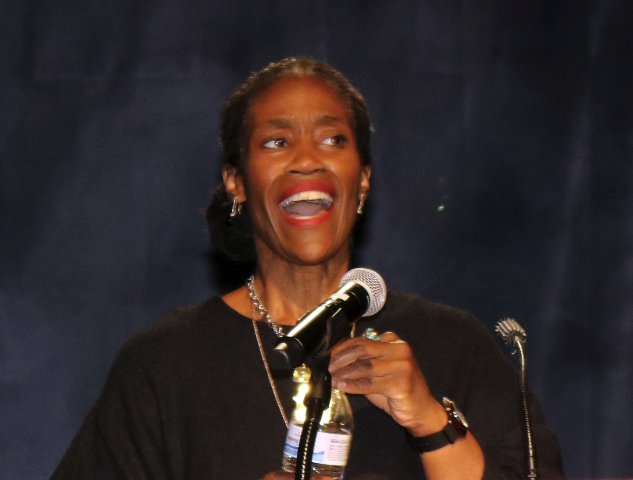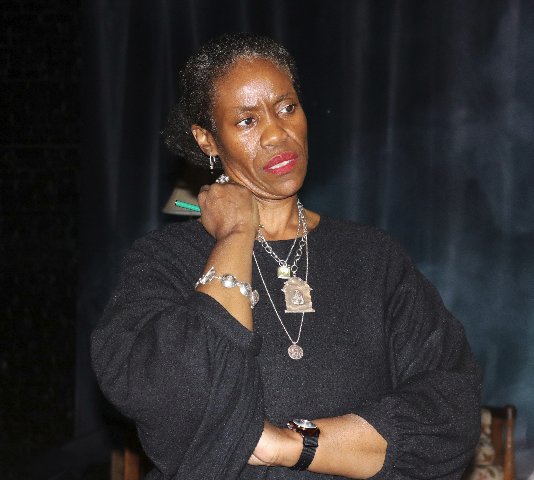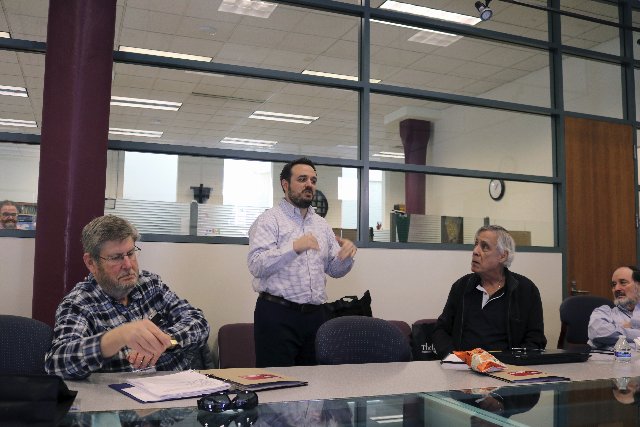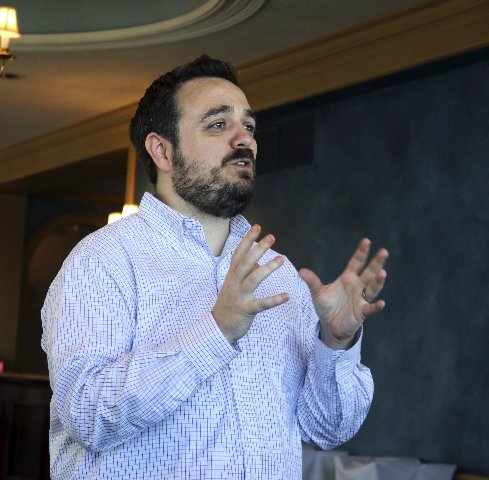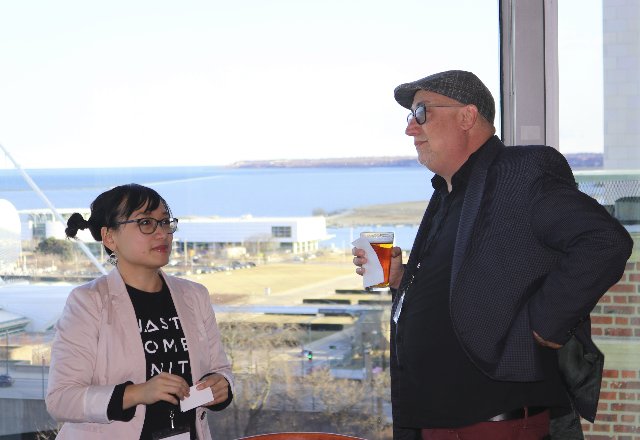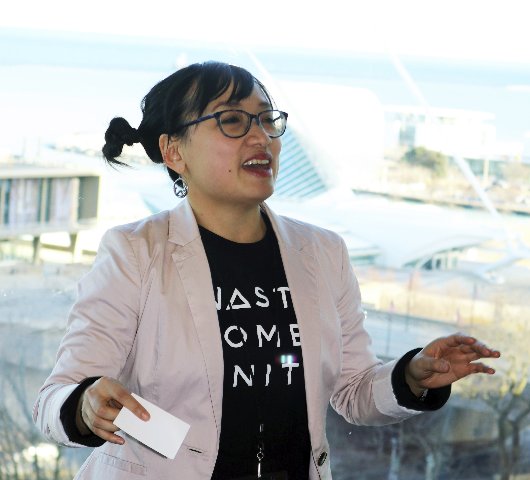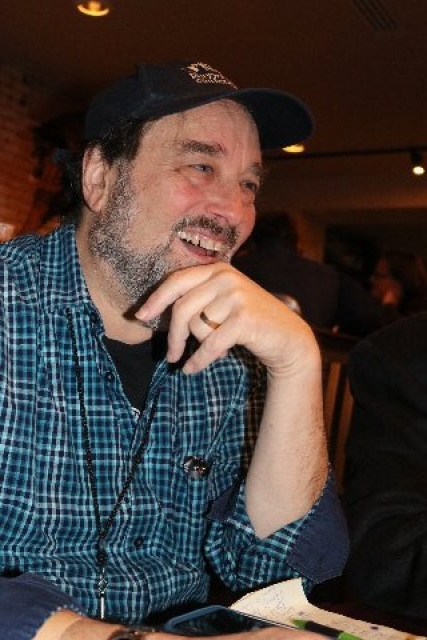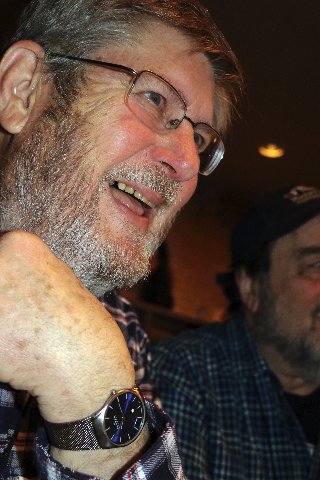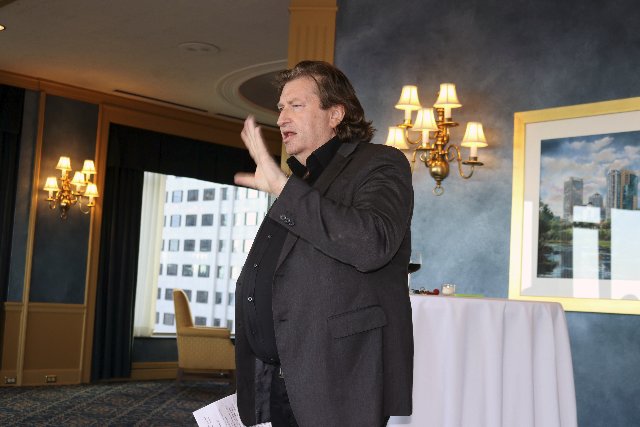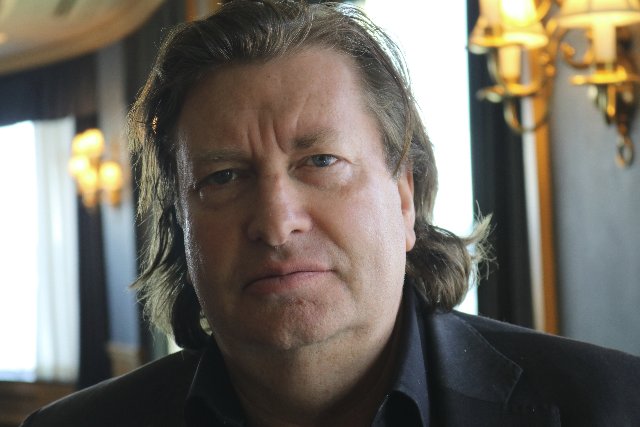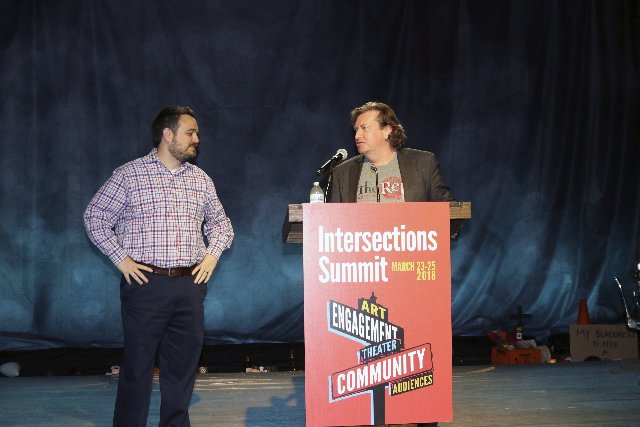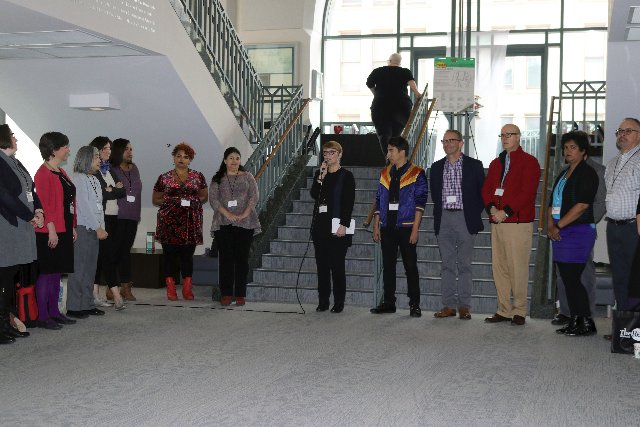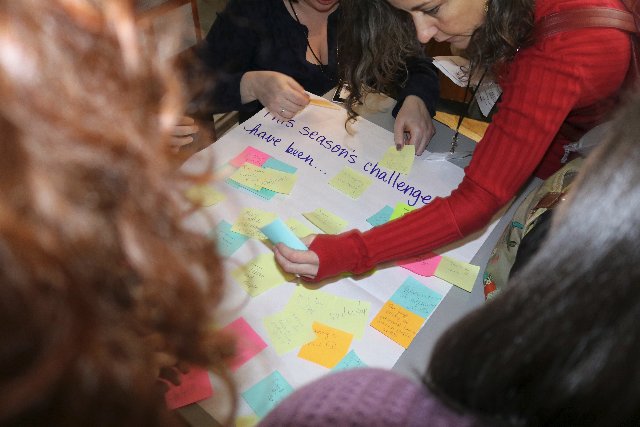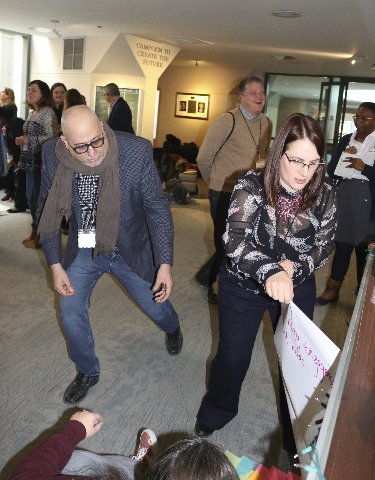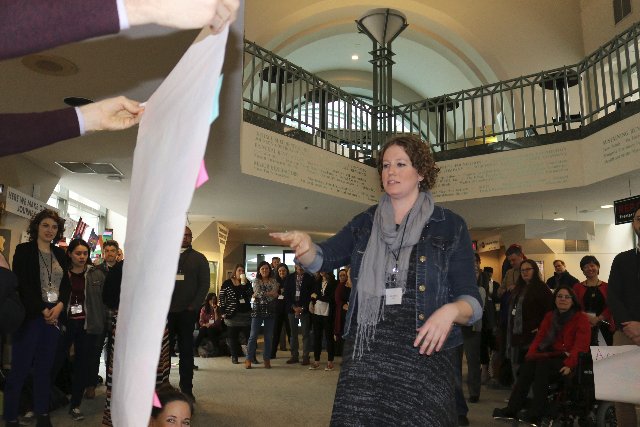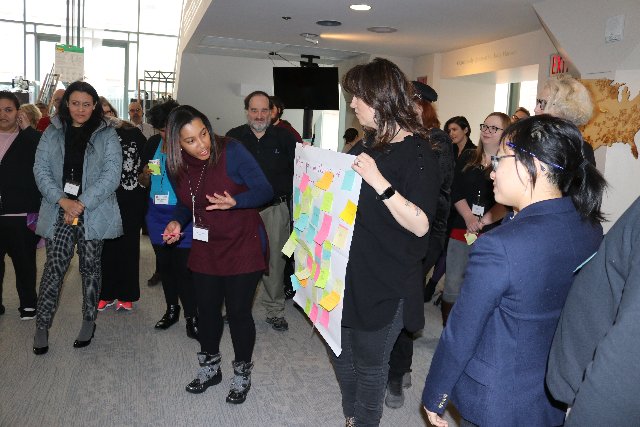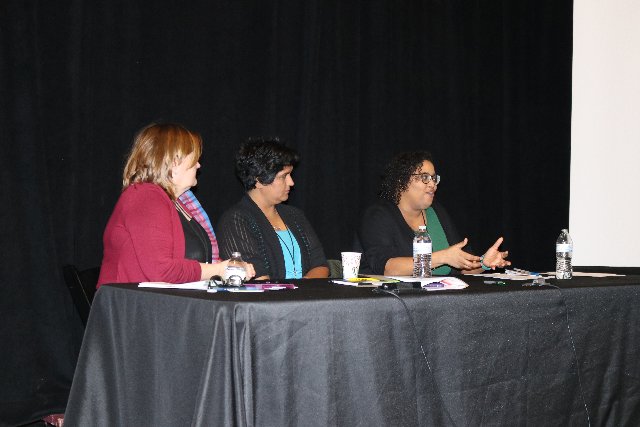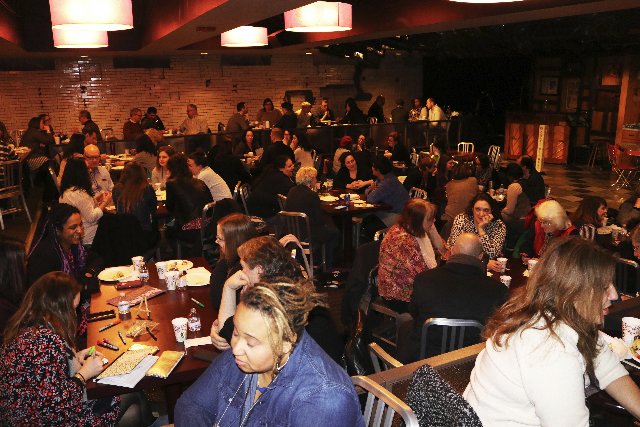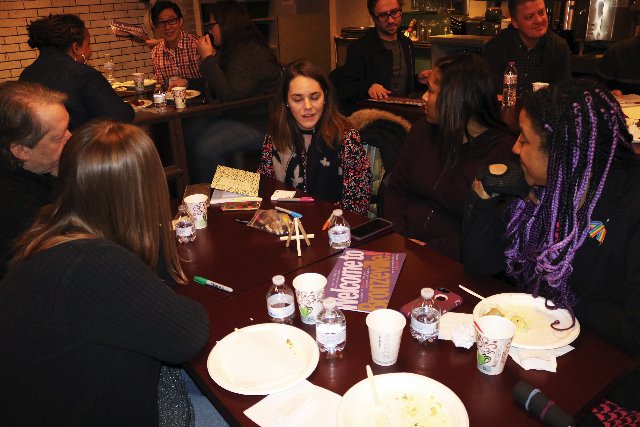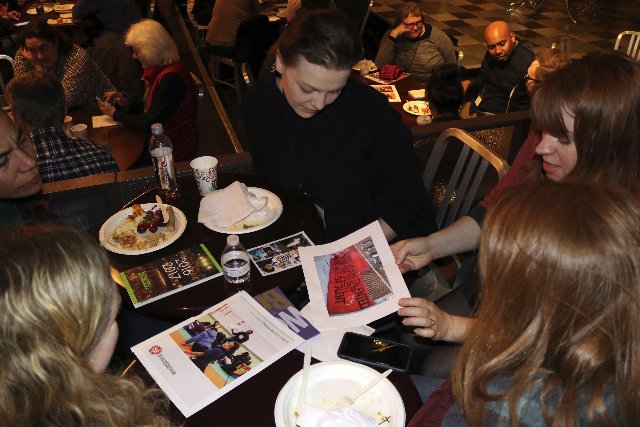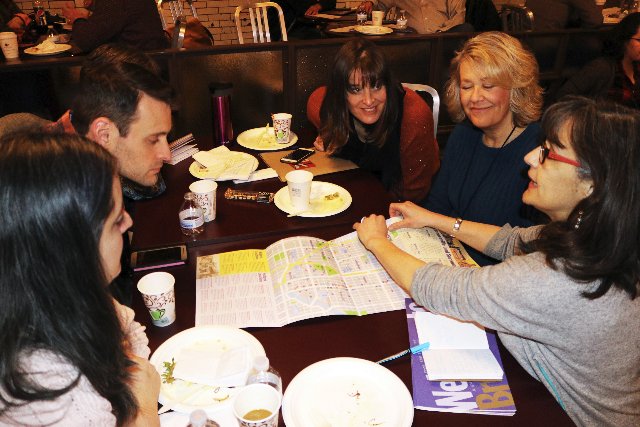Meet Me in Milwaukee
Intersections Summit Addresses Social Justice
By: Charles Giuliano - Mar 27, 2018
Some 12,000 years ago indigenous people settled in Milwaukee which translates as good, beautiful or pleasant land. Europeans arrived in 1675 and, as is the case all over America, stole what they found. Ancestors of some six or so tribes remain in the area but collect no benefits or royalties from those who now live and work there.
The Patty and Jay Baker Theater Complex of Milwaukee Repertory Theatre occupies a multi leveled structure that houses three venues in the heart of the downtown area. It is attached to the Intercontinental Hotel where we were guests from Tuesday through Sunday last week.
To get settled we arrived a day early at the invitation of Milwaukee Rep to participate in its Intersections Summit which was launched Friday afternoon and ended at noon on Sunday.
Starting on Wednesday the Executive Committee of American Theatre Critics Association met with and separately from the newly formed Diversity Committee. Like every other arts organization in America the challenge, indeed the struggle for survival, is to become younger and more diverse.
While numbingly obvious it is proving easier to say than do. That means old, straight, white dudes like me must be willing to give up and share power with emerging, younger and diverse members, present and future, over the spectrum of race, gender and identity. You have to give in order to get and it's tough to hammer out specifics.
The first face-to-face joint meeting entailed both frustration and conflict as well as progress and strategies for change. It was thrilling to finally meet and interact with individuals I knew only through conference calls and emails. Flashpoints that surfaced during these meetings were echoed by the keynote address and sessions of the Intersections Summit. There was a commonality of issues that all creative communities are dealing with.
As a first time visitor to Milwaukee there was a lot of learn and absorb. For openers, as the head of the local chapter of the NAACP informed us after a performance of “Until the Flood,” a one woman performance by Dael Irlandersmith. focused on events in Ferguson. Milwaukee is arguably among the most racially divided cities in the nation. It has the highest levels for black unemployment and incarceration.
If youngsters woop it up on St. Patrick’s day it’s called a celebration. A high spirited Fourth of July event of young blacks at the lake, as we were told, is treated like a potential riot. Mounted police and patrolmen escort the youth back across the line to their part of town.
A board member introducing keynote speaker, Carmen Morgan, stated that “What you hear in the news about Milwaukee is true.”
Now in its 64th season, when Chad Bauman took charge as managing director six years ago, there was a commitment to change. One of the steps was to disband an aging Caucasian company. That was already happening through the attrition of retirement. But having a resident company meant working to their skill set in programming. Change does not occur without some level of blowback. Currently, casting draws on actors from Chicago, New York, and California as well as from the Milwaukee community.
Many were resentful when Diane Paulus made a similar move in setting American Repertory Theatre, in Cambridge, Massachusetts on a different path. The cutting edge experimental era of Robert Brustein gave way to what some critique as a more Broadway and commercial orientation. If some of the Paulus shows reek of careerism and opportunism, under the granfaloon of high art and the avant-garde, Brustein served up a generous slather of stinkers. Shows developed under Paulus at ART have enjoyed successful runs in New York. That came at the cost of an expensive graduate program which has been suspended and is being redeveloped.
With limited resources theatre companies have to focus on where best to put their energy.
As Bauman and artistic director, Mark Clements, informed us during a gracious dinner, for the current season 60% of the casting is diverse. There is also expanded diversity in administration, tech and support staff.
With a lot of real estate and infrastructure, we were given a tour of the build out of a former power plant. This work is ongoing including pending renovation of the Stackner Cabaret. With a daunting payroll to meet there is the pittance of just $75,000 in state funding. Wisconsin is a purple state and it is hard to sell the idea that a vibrant arts community generates jobs, revenue and taxes. The arts are a vital aspect of attracting corporate executive talent. Of course one can root for the Bucks and Brewers. When in town, surely Speaker of the House of Representatives, Paul Ryan, shows up in the stands with a brat and bucket of suds.
Trump is a typical Republican in wanting to shut down government funding for the arts. In totalitarian times the arts are a dangerous locus for opposition. Consider that an actress, Cynthia Nixon, is planning to run for Governor of New York. That’s not so unusual as we have had an actor as President and another as Governor of California.
Like many theatre companies, from which we heard a number over the weekend, there was a divide between proportionality and all in programming. For large companies, with funding challenges and daunting overhead, the trick is to implement change while offering diverse and appealing seasons. That typically includes a popular musical, classic drama, a comedy, recycled recent Broadway, and an increment of the new and experimental. We also heard from grass roots and storefront companies that focus entirely on diversity.
In a one-on-one exchange with folks from Arizona they talked about a company that made the switch to diverse programming and saw their subscribers drop from 16,000 to 12,000. It has since adjusted to 14,000. The advice was to focus on what you’ve got, build from there, and not obsess on what is lost. You have to give up the past in order to move from the present into the future.
Truth is, good grief, who really gives a fig about holding onto straw hat and dinner theatre? Boring. Someone from a major company told me how they took a $120,000 bath on “Janis Joplin; The Musical.” That same company miscalculated with a production of “Every 28 Hours Plays” based on Ferguson. Prior to opening they were surprised by the run on the box office. There was a session devoted to representatives of companies that mounted that provocative work all over the country.
Companies have to adjust their notions of money in the bank musicals that may flop and cutting edge plays in pursuit of difficult to define potential audiences. Presently, there is no sure-fire matrix or Ouija board.
The relationship between critics and presenters came up during dinner. Can and should the lion lay down with the lamb to say nothing of breaking bread and accepting hospitality? Exploring case histories is it possible that, for some reason or other, a critic might have attitude toward a specific company? There was discussion of a local critic who went to New York to write a harsh review of “Junk” by Pulitzer Prize winning, Milwaukee based, playwright Ayad Akhtar. Raising my hand I stated than many in the room had seen it during our New York ATCA conference last November. It came on Sunday of a busy week and was more good than great. But I praised the set and its high tech sheen. Clements, who will direct it for Milwaukee next season, argued that the set was all wrong. Putting actors in techie boxes negated meaningful interactions. For me, the bold design was one of the more interesting take aways of a lackluster production.
Later, we engaged in further discussion of his plans. I commented that "Junk" entailed a lot to absorb about its business model. It was quite a departure from his other work. Clements responded that Akhtar has a long standing interest in markets and financial theory. It seems his father sponsored his time in New York if he would subscribe to and read the Wall Street Journal. He also wanted to write a play that did not include Muslim characters.
Discussing the impact of the Black Lives Matter themed “Until the Flood,” for example, I noted that we saw just two older black women in the audience. Clements commented that it “depends on who we bring in and on many nights the audience is more like fifty/ fifty.” For that production there is a lot of communcation outreach. The performance was preceded by an introduction from the understudy. After the show there is brief commentary from a community leader. In the lobby are facilitators for discussions, We met in a small group led by Ahmad Mohammed who represents the Frank Zeidler Center for Public Discussion. There were two questions generated by the production which we were each given two uninterupted minutes to respond to.
The conundrum is will a switch in programming gain traction with communities long isolated from theatre? A three person, fifty-year-old Chicago company talked about the year or more of prep entailed in bringing theatre into poor neighborhoods. That may entail a church or community center and most recently creating a popup, storefront venue. Diverse audiences are likely more willing to see theatre in their own community. Once developed we asked what happens to that popup theatre when the production ends?
How different is that from Joe Papp and his initial Public Theatre? During the utopian phase of the Russian Revolution theatre traveled around Siberia with shows staged in trains. In what way is theatre of social justice like, or different from, Brecht or socialist theatre of the WPA during the Great Depression? Weren’t the HUAC hearing of McCarthyism about rooting out Marxism from Hollywood? Theatre and the arts always represent a potent and dangerous vehicle for social and political change.
As Joseph Goebbels put it “When I hear the word culture I get out my revolver.”
Having initiated leadership in a new direction Bauman and Milwaukee Rep organized an ambitious conference. It is notable that there was no grant support and the three day event was paid for through operating funds. The hope is that initiative will transfer to another company and become an annual event. Bauman stated that the company is eager to share all of its planning templates and contact lists with a like-minded venue.
One might add to be careful what you wish for. As a first attempt the sessions were mixed. There was a difference of impact between presenters and delegates who have been doing this work for a long time compared to those for whom this was a new agenda. Following a morning session which everyone attended, led by Anita Maynard Losh of Arena Stage, there were multiple overlapping breakouts entailing tough decisions.
For me, there were too many set pieces, power point charts and stats, kumbaya moments, and not enough down and dirty facts or tales of nuts and bolts. During a Sunday morning summation session precious time was given to group meditation. It didn’t help that the wrap-up was delivered by an insecure, scattershot, over-the-top presenter when precision, insight and clarity were the order of the day. There were so many challenging ideas and loose ends that the craving for adequate closure proved to be a missed opportunity. A highlight, however, were one minute speeches by the teenaged interns Campbell Martinez, Colin Woldt, and Mainyia Xiong. There was an aha moment went Martinez asked to be included now so she can be a leader tomorrow. Can I have an Amen?
The heart and soul of the conference focused on the game changing keynote address of Yale School of Drama professor Carmen Morgan. With sly, hipster humor she riffed on what she had been instructed to say and then stood that on its head. There were knowing cross checks with Courtney McEniry, the Director of Community Engagement, for Milwaukee Rep.
Morgan noted that the conference was held on land stolen from native people. Following a recitation of Wisconsin and Milwaukee tribes she asked for a moment of silence and introspection.
If the theme of the conference entailed strategies for community outreach she laid out all the reasons why that doesn’t work. Pursuing that path, for Morgan, meant that we would be having the same conversation for years if not decades to come. Diversity just isn’t possible without systemic change and a commitment to social justice.
On the table were notions of equity, identity and inclusion. That’s all well and good but, as Morgan put it, you can’t have community development without social justice. “In order to change you actually have to change.” She posited that were she the Other being approached "I would not trust you." Why would "I" want to be a part of an agenda that you define without including me in the process? You can't just desire and invite diversity and expect that people will come and work with you.
While mostly adhering to theory she offered a telling anecdote. She was approached by a board seeking to diversify. After discussion of give and take, bottom line, she advised the board to stay white and commit to being anti-racist. If you make systemic change the board and organization will attract and retain diversity.
Hey, isn’t that a lesson for all of us? As a board member, if we want ATCA to survive and become more diverse, I have to give up power and privilege while embracing diversity and change. That sounds about right but let’s see how it plays out. To fail will have dire consequences.
Thanks Carmen, I needed that.
Chad Bauman responded to an email message from ATCA Board President, Bill Hirschman, thanking him for the hospitality extended to the board and diversity committee. With irony Bauman noted that for the opening on the prior night, for the first time, there was no reviewer from the Milwaukee Journal Sentinel. He had a conversation with the editor- in-chief about how the publication is cutting back on arts coverage.
Warmly Bauman wrote that “As it relates to the Summit, it was challenging – logistically, intellectually and emotionally – for many of us. Issues discussed asked us to challenge our own biases and privilege, to equitably engage populations that historically have been underrepresented in our theaters, and to recommit to using the resources invested in us to serve as catalysts of positive change in our community. Not easy tasks. It reminded me that we are all works in progress. All in all, nearly 200 theater professionals from 80+ organizations from 30+ states attended including ATCA, TCG, funders such as the Doris Duke Charitable Foundation, and journalists from media outlets such as The New York Times and The Chicago Tribune. More than 50 engagement leaders presented sessions and several of which were live streamed via our Facebook page as well as Howlround.
“If you are interested in viewing these sessions, please visit: http://howlround.com/livestreaming-the-intersections-summit-at-milwaukee-repertory-theater-in-milwaukee-wi-friday-23.”
While I have reported on the events in my own words I urge you to click on the link and, in particular, view the keynote speech of Morgan.
Then take two aspirins and call me in the morning. We’re all in this together.

